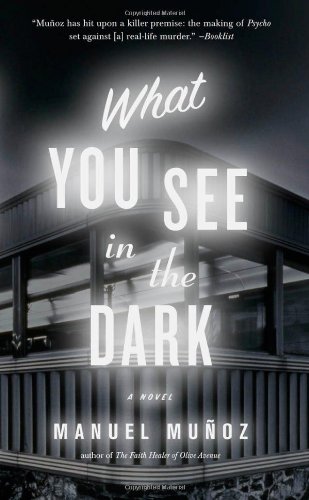What You See in the Dark
The scene opens on a diner in Bakersfield, California. A young couple – he, the popular boy in town, she, the shy Mexican girl who works in the shoe store – are quietly falling in love. He works at his mother’s hotel, a lonely place off the old highway. She wants to be a singer; he just wants to be with her. Their dreams are cut short with a brutal murder. Bakersfield, focused on the crime, overlooks the visit of a famous director and actress, scouting locations for a low-budget movie whose plot eerily echoes local events.
With scenes as subtle and deliberate as Hitchcock’s, the aftermath of the murder unfolds against the making of Psycho. As The Actress (never named in the novel) emotionally prepares herself to film the pivotal shower scene, unsure of whether or not the audience is ready to see that kind of violence, accusations fly in Bakersfield, and people flock to catch a glimpse of the blood-splattered staircase where the real murder took place.
What You See in the Dark is not a detective story. Muñoz explores human reaction to violence, the desensitization that started for cinema audiences with Psycho and its shower scene. The story is stark, wrenching, terrifying by how little Bakersfield is bothered by the crime. Unfurling like a Hitchcock film, you can almost hear Psycho’s familiar soundtrack through the novel, a reminder that beneath the most mundane of events runs an undercurrent of tension. Muñoz beautifully captures film noir on the page, a cinematography of words and paragraphs. I was riveted by this debut novel and thoroughly recommend it.










